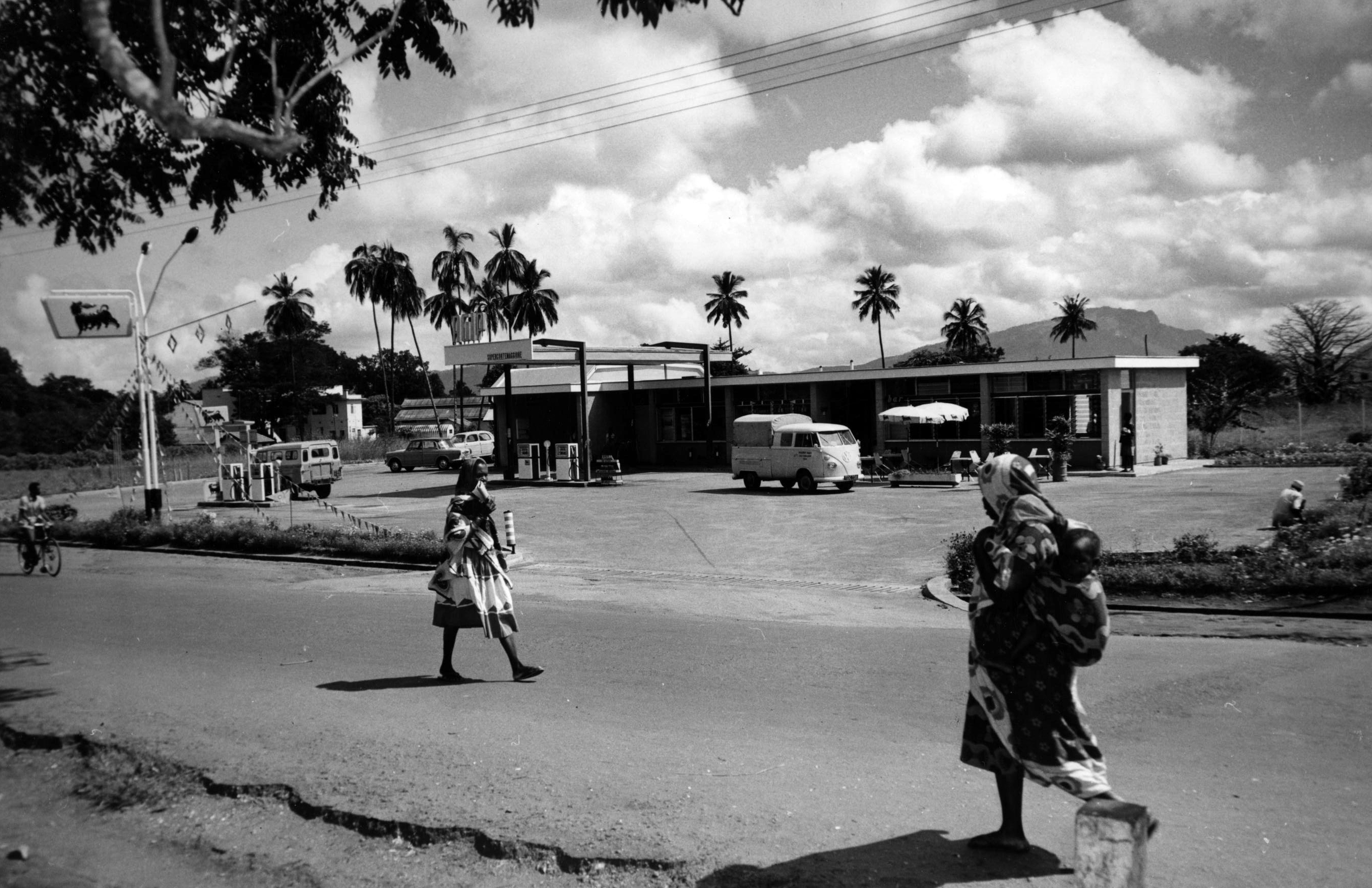PAST TALKS 2023
9 May 2023
DocTalks x MoMA
CANCELED!!
Sanitary Architecture
MARIANNE DHENIN
University of Basel
Respondent: Nadi Abusaada, ETH Zurich
![]() "The Cholera in Egypt: Inhabitants of Boulak, Cairo, Crowding into Barges on the Nile."
"The Cholera in Egypt: Inhabitants of Boulak, Cairo, Crowding into Barges on the Nile."
***
ENI’s Disegno Africano
GIULIA SCOTTO
USI, Accademia di Architettura di Mendrisio
Respondent: Ijlal Muzaffar, Rhode Island School of Design
![]()
Stazione di servizio Agip a Morogoro-Tanzania 196. Courtesy ENI historical archive.
DocTalks x MoMA
CANCELED!!
Sanitary Architecture
and the Battle for the Urban Commons
in Modern Egypt
MARIANNE DHENIN
University of Basel
Respondent: Nadi Abusaada, ETH Zurich
 "The Cholera in Egypt: Inhabitants of Boulak, Cairo, Crowding into Barges on the Nile."
"The Cholera in Egypt: Inhabitants of Boulak, Cairo, Crowding into Barges on the Nile."
Mounted Egyptian police stormed Bulaq on July 21, 1883, setting fire to homes and shepherding thousands of fleeing residents onto barges on the Nile River. A week earlier, cholera had settled into the marshy earth of the Cairo neighborhood and begun to tear through its narrow alleyways and makeshift huts, leaving hundreds dead. As the disease spread into wealthier districts to the north, the Egyptian Board of Health ordered the clearance of large swaths of Bulaq to disinfect the area. Following the epidemic, decrees were issued, giving sanitary authorities increased control over the built environment, establishing new standards for dwellings, and criminalizing the construction of slum areas like those cleared from Bulaq.
This paper explores the afterlives of these disease-driven interventions in the built environment, tracing their reverberations into modern Egypt. It draws on reports, correspondence, and memoirs of experts and administrators as they sought to reorder Egypt’s slums. These sources reveal how colonial and Egyptian elites envisioned the future social and spatial order of the nation and its cities. The paper also reads the everyday resistance of the urban poor, recorded in the press, as alternate trajectories. Even as sanitary authorities characterized them as squatters and vectors of disease and sought to exclude them from new urban developments, those expelled from neighborhoods like Bulaq often returned and remade their homes. In doing so, they contested false necessities and imagined alternate futures.
Contextualizing its arguments within concurrent nation-building processes, interventions in infrastructure and the built environment, and developments in sanitary science, including shifting understandings of nature’s role in fostering or preventing disease, this paper asks how competing visions of the modern advanced by Egypt’s elites and its urban poor in the aftermath of the 1883 cholera epidemic have gnawed on Egyptian cities, leaving scars in their urban and social fabric.
This paper explores the afterlives of these disease-driven interventions in the built environment, tracing their reverberations into modern Egypt. It draws on reports, correspondence, and memoirs of experts and administrators as they sought to reorder Egypt’s slums. These sources reveal how colonial and Egyptian elites envisioned the future social and spatial order of the nation and its cities. The paper also reads the everyday resistance of the urban poor, recorded in the press, as alternate trajectories. Even as sanitary authorities characterized them as squatters and vectors of disease and sought to exclude them from new urban developments, those expelled from neighborhoods like Bulaq often returned and remade their homes. In doing so, they contested false necessities and imagined alternate futures.
Contextualizing its arguments within concurrent nation-building processes, interventions in infrastructure and the built environment, and developments in sanitary science, including shifting understandings of nature’s role in fostering or preventing disease, this paper asks how competing visions of the modern advanced by Egypt’s elites and its urban poor in the aftermath of the 1883 cholera epidemic have gnawed on Egyptian cities, leaving scars in their urban and social fabric.
***
ENI’s Disegno Africano
GIULIA SCOTTO
USI, Accademia di Architettura di Mendrisio
Respondent: Ijlal Muzaffar, Rhode Island School of Design

Stazione di servizio Agip a Morogoro-Tanzania 196. Courtesy ENI historical archive.
In the early postcolonial era, the Italian national hydrocarbon agency ENI entered the oil market of 25 African countries. ENI’s “paralle diplomacy” understood the decolonization of Africa as the right moment for Italy to re-ensure access to Africa’s resources and emancipate itself from the “seven sisters” oil lobby. Through a “parallel” corporate diplomacy and the construction of material artefacts, ENI developed an incremental network of lines and nodes through which oil was transported, refined, and commercialized. This set of strategic infrastructural operations – often referred to as ENI’s ‘disegno Africano’ – were depicted by ENI as the “missing infrastructures” able to spur development and real economic independence. But, in reality, pipelines, refineries, and gas stations materialized ENI’s neo-colonial project. They suggested an oil-based modernity and a consumerist way of life and operated as outposts to conquer new territories, endangering environments and local populations. This paper interrogates ENI’s infrastructural projects to achieve a deeper understanding of the unspoken territorial and social vision of the Italian company and offers an alternative to the official narrative of the pioneering and decolonizing mission proposed by ENI in Italy and abroad.